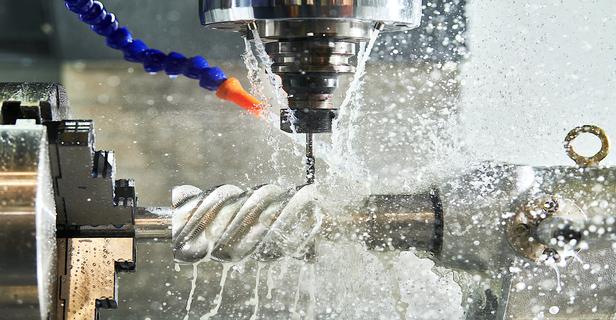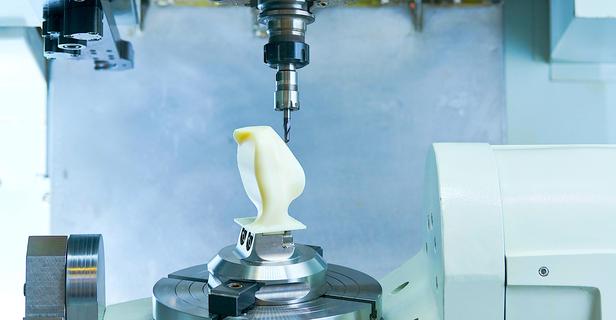
While 3D printing has revolutionized prototyping and manufacturing in specific applications, it still is impossible to swap out CNC machining or injection molding with a different process. However, combining CNC machining and 3D printing can prove excellent to meet the timetable as well as design requirements. Combining these two processes can deliver several relevant benefits for the manufacturing industry.
Here are some reasons why you should combine CNC machining and 3D printing plus the benefits offered by this merger:
Related:Bigger Is Not Always Better with 3D Printing but Micro Precision Is Huge
The fact that 3D printing is in its infancy points directly at the tolerances of modern 3D printers. Despite constant improvements every year, many end-use parts have tolerances and other critical requirements that are only delivered by incumbent manufacturing methods.
CNC machining is relatively consistent and presents a more sophisticated product. Its equipment is not as sensitive to heat as a 3D printer, which can warp and distort the workpiece and lead to uncertain runs of products.
Related:Manipulating Particles With Sound for Next-Gen 3D Printing and Beyond
A successful union of both presents the advantages of rapid prototyping offered by 3D printers. At the same time, you can dial in the tolerance from the 0.1-0.3 mm from a DMLS or SLS 3D printer to the approximately 0.025-0.125 mm as rendered by a CNC milling machine.
The combination of techniques provides rapid prototypes as well as consistent and accurate performance. It also facilitates fine finish work on a machine that is less prone to warp the product.
We might argue that there are too many steps involved in 3D printing. First, you need to first print a part first and then deliver it to another section of the shop floor for CNC machining. However, compared to injection molding, this process is still less time-intensive.
Injection molding demands that the design and creation of a specialized tool must go through each workpiece during the molding process. This process leads to higher time consumption.
It is simpler to modify the digital files that end up getting 3D printed as prototypes than to tweak an existing injection molding machine tool.

Combining these two worlds involves 3D printing a part and then subjecting it to CNC milling to adjust the final tolerances. However, another story has been emerging about unifying these two technologies into a single machine.
The result is something similar to the industrial-scale hybrid milling machines. Such machines will come with a build volume of approximately 40 feet in diameter, about 10 feet tall. These hybrid 3D printing-milling machines could mill the surface of a new 3D print while the operation is still in progress.
Here are certain cases where you can successfully harness the unification of 3D printing and CNC machining and streamline the manufacturing process:
You may want to make a part from plastic, but feel that additive manufacturing might not deliver the necessary precision. In a case where tight tolerances are paramount, combining 3D printing and CNC machining can be helpful.
You can use 3D printing to make the part and then implement CNC machining to trim it to the required dimensions. This gesture will eliminate any inadequacies by the additive manufacturing hardware.
The combination of 3D printing and CNC machining can also work exceptionally well for time-sensitive operations. To produce replacement components within a small window, you might not have enough time to wait for injection molding dies to get fashioned.
Under such constrained scenarios, you can establish an array of processing that can function with 3D printing and CNC machining without worrying about delays. Because both of these technologies rely on CAD files, it is easy to alter designs and implement them in parts and products. Conversely, changing a die-based solution will lead to even more hold-ups.
Adobe StockIndustries that must meet demanding product specs across several units include the automotive, defense, aerospace, and medical device sectors. As per a recent report, 3D printing and modeling have become crucial to face and hands transplant.
However, meeting customer expectations, better safety oversight, and pursuing a competitive advantage demands world-class design and meticulous manufacturing processes from every type of corporation.
Therefore, to satisfy the values mentioned above, consider the following tips to get the most out of this new unified manufacturing process -
Communicate with machinists early and frequently to ensure there are no errors and that the product gets delivered as per the mentioned specs. There will be sections on the workpiece that will require significantly tight tolerances. Thus, it is imperative to call these out beforehand to avoid miscommunication.
If you feel that some features on the part or product might require milling after printing, be sure to design the product explicitly so that the milling machine can physically reach that specific area.
You must know when to use extra material. A 3D printed part could be about 85 percent to 90 percent of the way to the required fit and tolerance. But to ensure that it gets the rest of the way, the CNC milling process can reduce its mass and dimensions. If you do not account for this with extra material, the product might end up with weak points.
The primary reason to unify 3D printing and CNC machining is that this can boost the productivity of your manufacturing processes. This unification overcomes the limitations of each technology when used individually.
From rapid prototyping to full-blown mass production, 3D printing and CNC machining are now viewed as technologies that complement each other instead of as competitors.
If you have an innovative manufacturer to deploy the two side by side, you can create parts and products within a shorter time frame and minimize material wastage.
Peter Jacobs is the Senior Director of Marketing at CNC Masters. He is actively involved in manufacturing processes and regularly contributes his insights for various blogs in CNC machining, 3D printing, rapid tooling, injection molding, metal casting, and manufacturing in general.